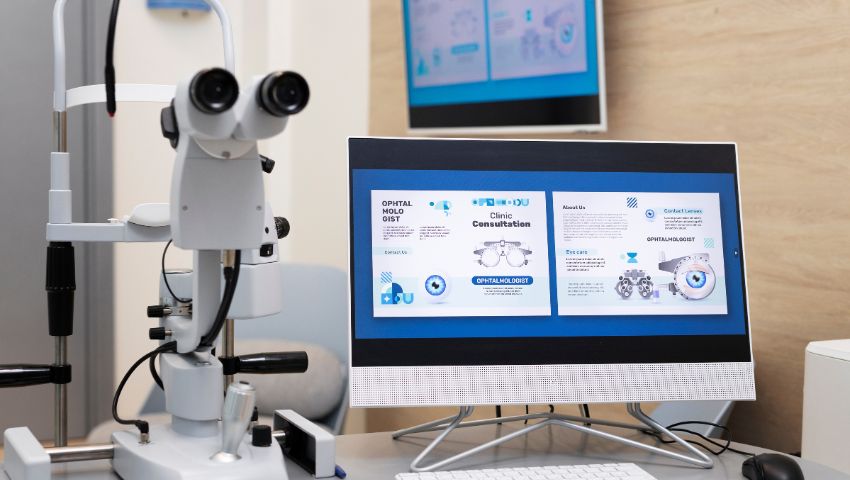
Table of Contents
Introduction
Challenges with Traditional Workflows
Why Workflow Optimization Matters
Automation in Pharmacies
How EMR Integration Helps
Benefits of Automation and Integration
Use Cases and Success Stories
Common Challenges and Fixes
FAQs
Conclusion
Introduction
Pharmacy operations are essential to the overall efficiency of any healthcare facility. However, they are often slowed down by manual processes, fragmented data systems and communication gaps. The solution? Optimizing pharmacy workflows with automation and EMR integration. By digitizing and connecting the dots across the patient journey, clinics and hospitals can improve speed, reduce errors and enhance patient care.
Challenges with Traditional Workflows
Conventional pharmacy processes often rely on paper prescriptions, phone-based clarifications, and siloed data. This can lead to:
- Prescription delays
- Manual transcription errors
- Poor communication between doctors and pharmacists
- Lack of real-time inventory visibility
These inefficiencies not only waste time but also compromise patient safety and satisfaction.
Why Workflow Optimization Matters
As patient volumes grow and treatment complexity increases, optimizing pharmacy workflows becomes critical. Today’s healthcare environment demands:
- Faster medication fulfillment
- Better documentation and traceability
- Seamless coordination between departments
- Data-driven decision-making
A well-optimized pharmacy can help reduce turnaround times, cut costs, and improve outcomes across the board.
Automation in Pharmacies
Automation technologies are helping pharmacies shift from reactive to proactive operations. Key automation tools include:
- Barcode scanning and RFID for accurate dispensing
- Automated dispensing cabinets (ADCs) for high-volume medication management
- Robotic prescription filling for repetitive tasks
- Automated alerts for low inventory or prescription conflicts
These tools reduce the burden on staff and free up time for patient-facing activities.
How EMR Integration Helps
Electronic Medical Records (EMRs) play a vital role in synchronizing pharmacy operations with the rest of the clinic. When integrated properly, EMRs allow:
- Instant prescription transmission from the clinician to the pharmacy
- Real-time access to patient history, allergies and current meds
- Automatic dosage checks and interaction alerts
- Closed-loop communication between providers and pharmacists
This connectivity minimizes miscommunication and ensures safer, more personalized care.
Benefits of Automation and Integration
Optimizing pharmacy workflows with automation and EMR integration delivers a range of benefits:
- Fewer medication errors through auto-verification and alerts
- Faster turnaround on prescriptions and treatment plans
- Better patient adherence with timely refills and reminders
- Improved regulatory compliance through automated tracking and reporting
- Higher staff satisfaction by reducing repetitive, manual work
These improvements directly translate to better patient outcomes and operational efficiency.
Use Cases and Success Stories
Many forward-thinking clinics have already seen success by optimizing their pharmacy workflows:
- IVF Clinics: Coordinate medication timing with treatment stages to reduce the risk of missed doses.
- Oncology Centers: Automate chemotherapy prep with robotic accuracy for safety and speed.
- Multispecialty Hospitals: Use EMR-connected pharmacies to sync inpatient prescriptions in real time for quicker discharges.
These examples show how optimization isn’t just a tech upgrade—it’s a clinical enabler.
Common Challenges and Fixes
| Challenge | Solution |
|---|---|
| Staff resistance to change | Provide training and involve them early in the rollout |
| Upfront investment | Focus on ROI and long-term savings from reduced errors and time |
| System compatibility | Choose platforms that support API integrations and are EMR-agnostic |
| Data privacy | Ensure encryption, role-based access, and regulatory compliance |
With the right strategy and support, these challenges can be successfully navigated.
FAQs
What is pharmacy workflow optimization?
It refers to improving efficiency and accuracy in medication-related processes using technology and better coordination.
How does automation help in a pharmacy setting?
It reduces manual errors, speeds up dispensing and frees up staff for patient care.
Why integrate pharmacy systems with EMRs?
To enable real-time, seamless communication between prescribers and pharmacists, enhancing safety and efficiency.
Is this only for large hospitals?
No. Clinics of all sizes, including IVF and specialty practices, benefit from pharmacy workflow optimization.
Does this impact patient experience?
Yes, patients get faster service, fewer errors, and better support throughout their care journey.
Conclusion
Optimizing pharmacy workflows with automation, IVF software and EMR integration is no longer optional—it’s essential for modern healthcare. From streamlining operations to enhancing patient safety, the benefits are clear. By embracing smart tools and integrated systems, clinics can move toward a more efficient, responsive and patient-centered model of care.